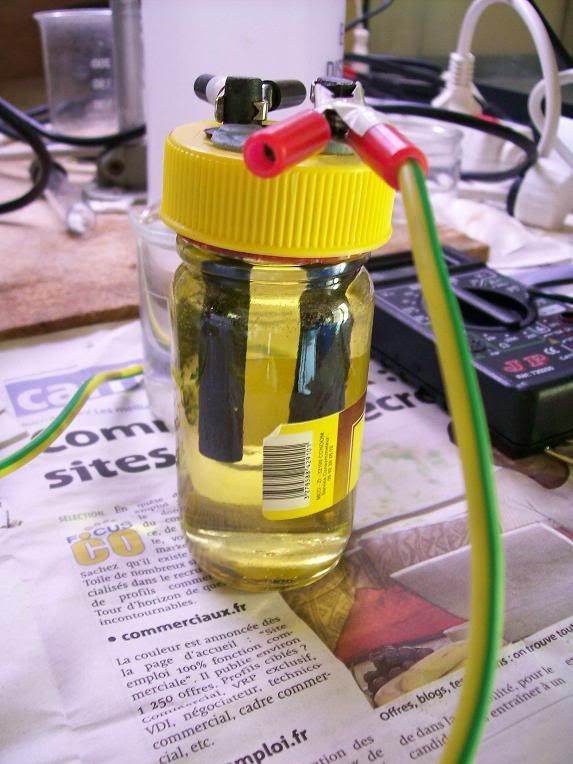Antwain, actually, testing KBrO3 purity is very easy. Just take some of the crystals and add them to just 1 ml of 10% H2SO4 (not HCl, use H2SO4). If the solution remains colorless, then you have really pure KBrO3, if the solution turns ligt yellow, then you have some KBr in your KBrO3. If the solution turns orange and you see even some vapor of Br2, then you have very impure KBrO3. Also, try your solid, mixing it with some powdered S and/or C, and ignite. If you have KBrO3, then you'll definitely notice, even if it is impure
 .
.If you see a steady stream of bubbles of oxygen at your anode, then it is best to stop. The concentration of bromide then has dropped considerably. Let the contents of the cell cool down in the fridge in order to get most of your KBrO3 out of it, and keep the liquid for further production of KBrO3 (just add new KBr and maybe some water).


 .
. .
.














